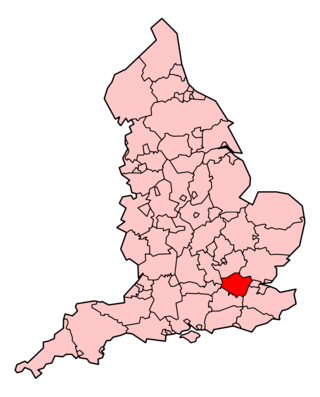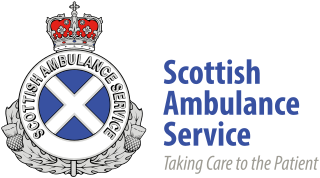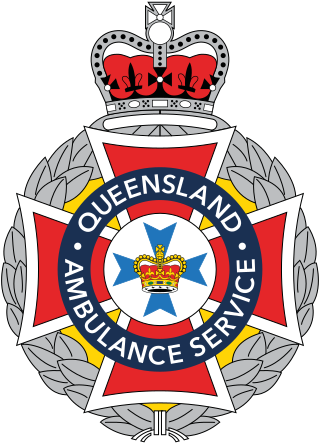
The London Ambulance Service NHS Trust (LAS) is an NHS trust responsible for operating ambulances and answering and responding to urgent and emergency medical situations within the London region of England. The service responds to 999 phone calls across the region, and 111 phone calls from certain parts, providing triage and advice to enable an appropriate level of response.

Auxiliary Medical Service (AMS) is a voluntary medical and health services provider in Hong Kong. Its mission is to supply effectively and efficiently regular services to maintain the health and well-being of people in Hong Kong.

NSW Ambulance, previously the Ambulance Service of NSW, is an agency of NSW Health and the statutory provider of pre-hospital emergency care and ambulance services in the state of New South Wales, Australia.

The Scottish Ambulance Service is part of NHS Scotland, which serves all of Scotland's population. The Scottish Ambulance Service is governed by a special health board and is funded directly by the Health and Social Care Directorates of the Scottish Government.

The Welsh Ambulance Services NHS Trust is the national ambulance service for Wales. It was established on 1 April 1998 and as of December 2018 has 3,400 staff providing ambulance and related services to the 3 million residents of Wales.

The Westpac Lifesaver Rescue Helicopter Service is a helicopter surf lifesaving service that operates in Australia.

Yorkshire Ambulance Service NHS Trust (YAS) is the NHS ambulance service covering most of Yorkshire in England. It is one of ten NHS Ambulance Trusts providing England with emergency medical services as part of the National Health Service it receives direct government funding for its role.

The East of England Ambulance Service NHS Trust (EEAST) is an NHS trust responsible for providing National Health Service (NHS) ambulance services in the counties of Bedfordshire, Cambridgeshire, Essex, Hertfordshire, Norfolk and Suffolk, in the East of England region. These consist of approximately 6.2 million people across an area of 7,500 square miles (19,000 km2).

The West Midlands Ambulance Service University NHS Foundation Trust (WMAS) is responsible for providing NHS ambulance services within the West Midlands region of England. It is one of ten ambulance trusts providing England with emergency medical services, and is part of the National Health Service.
Winnipeg Fire Paramedic Service (WFPS) provides fire and EMS services to the City of Winnipeg, Manitoba. It operates from 27 fire stations, and 3 administration offices across the city.

Emergency medical services in the United Kingdom provide emergency care to people with acute illness or injury and are predominantly provided free at the point of use by the four National Health Services (NHS) of England, Scotland, Wales, and Northern Ireland. Emergency care including ambulance and emergency department treatment is only free to UK residents and a charge may be made to those not entitled to free NHS care.

Australian mobile intensive care ambulances (MICA) are well-equipped ambulances staffed by highly trained paramedics dispatched to emergency situations where patients require a higher level of care than a regular ambulance can provide.
Since 1 July 2008, Ambulance Victoria has been the sole provider of emergency ambulance services in Victoria, having been formed from the merger of the three previous providers of emergency ambulance services: the Metropolitan Ambulance Service (MAS), Rural Ambulance Victoria (RAV), and the Alexandra District Ambulance Service (ADAS).
Emergency medical services in Australia are provided by state ambulance services, which are a division of each state or territorial government, and by St John Ambulance in both Western Australia and the Northern Territory.
Emergency medical services in New Zealand are provided by the Order of St John, except in the Greater Wellington region where Wellington Free Ambulance provides these services. Both have a history of long service to their communities, St John since 1885 and Free beginning in 1927, traditionally having a volunteer base, however the vast majority of response work is undertaken by paid career Paramedics. Strategic leadership of the sector is provided by NASO which is a unit within the Ministry of Health responsible for coordinating the purchasing and funding of services on behalf of the Ministry and the Accident Compensation Corporation.

The Queensland Ambulance Service (QAS) is the state emergency ambulance and patient transport provider in Queensland, Australia. QAS is part of the Queensland Government under the Queensland Health portfolio and is one of the largest ambulance services in the world.

Ambulance Victoria (AV), a Victorian agency of the Department of Health and Human Services, is the statutory provider of pre-hospital emergency care and ambulance services in Victoria. Ambulance Victoria was formed on 1 July 2008 with the merger of the Metropolitan Ambulance Service (MAS), Rural Ambulance Victoria (RAV), and the Alexandra District Ambulance Service (ADAS). Ambulance Victoria has undergone significant reform since 2008.
SAAS MedSTAR is the specialist emergency medical retrieval service for the state of South Australia. MedStar is operated by SA Health through the SA Ambulance Service and is designed to respond to trauma, medical and disaster emergencies anywhere within the state. MedSTAR Kids is the paediatric and neonatal service provided by MedSTAR.

Ambulance Tasmania, formerly known as the Tasmanian Ambulance Service, provides ambulance services in the state of Tasmania, Australia. The service was established by the Ambulance Service Act 1982 and operates within the Department of Health.
St John Ambulance Western Australia is a non-profit, charitable organisation providing first aid services and training, urgent care, patient transport, ambulance and other medical services in Western Australia. It has provided the ambulance service in Western Australia since 1922. These services are provided through a combination of paid and volunteer staff. St John WA is funded through a combination of government funding, Lotterywest grants, corporate and private donations and user pays services.


















